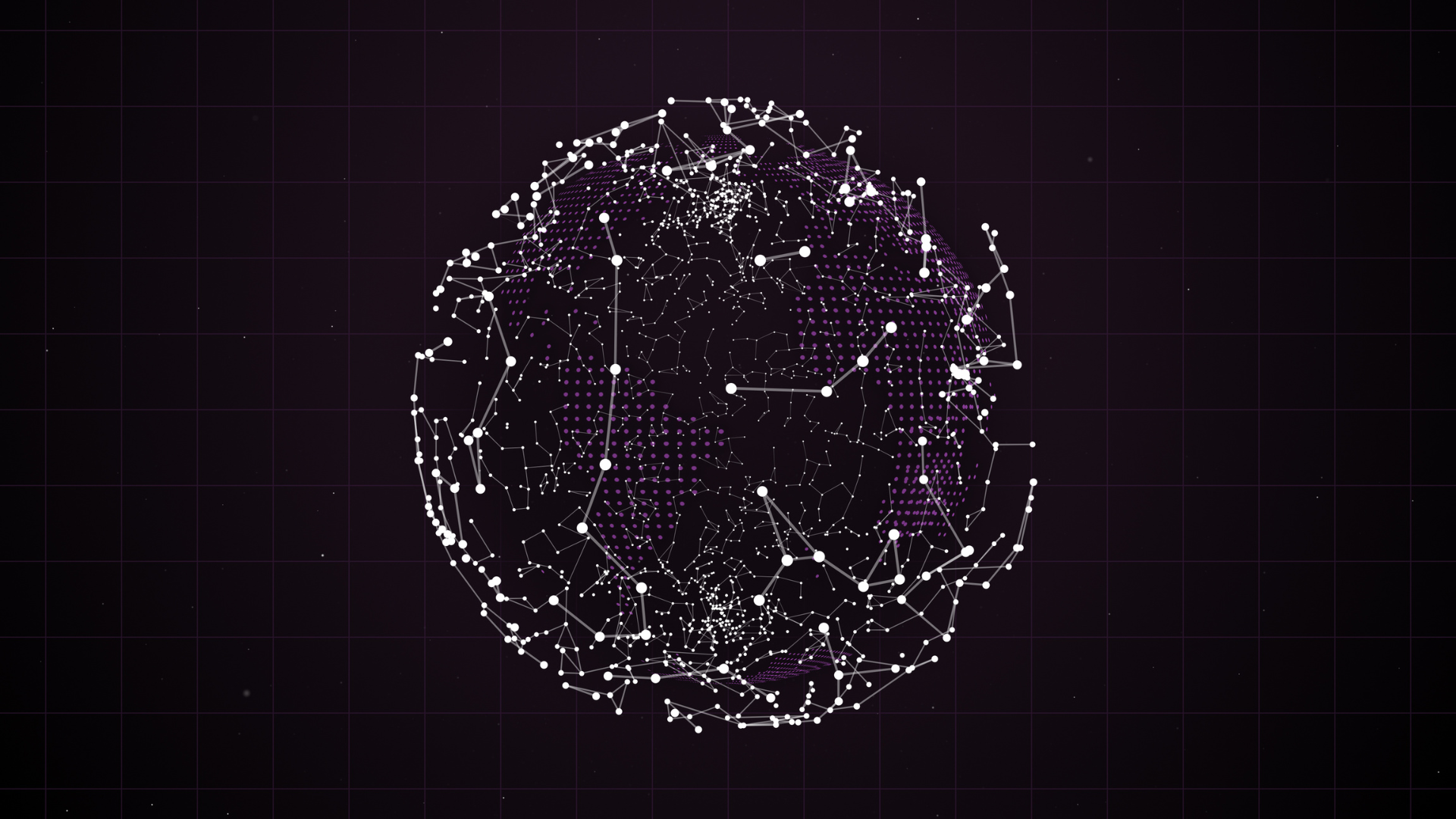
February 24, 2025
Understanding AI Agents: A Guide to AI Agentic Workflow
Author:

CSO & Co-Founder
Reading time:
17 minutes
While it might be tempting to dismiss this as another industry buzzword, AI Agents represent a genuine milestone in harnessing AI’s practical potential. They mark the crucial transition from AI systems that simply respond to commands to autonomous problem-solvers that can understand their environment, set objectives, and independently work toward achieving complex goals.
In this comprehensive guide, we’ll explore the inner workings of AI agentic workflows, examine their key components, and discover how they’re already revolutionizing industries from customer service to supply chain management.
What is an AI agentic workflow?
What sets AI Agentic Workflows apart is their ability to bridge the gap between theoretical AI capabilities and practical business applications. Beyond the terminology, we’re talking about a fundamental shift in how AI operates: from isolated task execution to orchestrated, goal-oriented processes.
Imagine having a digital colleague who doesn’t just follow instructions but actively thinks through problems, breaks them down into manageable steps, and adapts their approach based on real-time feedback.
This is the promise of AI agentic workflows – a sophisticated orchestration of artificial intelligence that mirrors human cognitive processes while operating at machine scale and speed.
As we stand at the threshold of this new era in AI development, understanding agentic workflows becomes crucial for anyone involved in technology, business processes, or digital transformation. These systems represent more than just an incremental improvement in AI capabilities – they signal a fundamental shift in how artificial intelligence can be deployed to solve real-world problems.
Defining AI agents
An AI agent is defined as a system or program capable of autonomously performing tasks on behalf of a user or another system. These agents are designed to interact with their environment, make decisions, and execute actions to achieve specific goals. They utilize advanced techniques, such as natural language processing and machine learning, to adapt and improve their performance over time.
Key characteristics of AI agents include:
- Autonomy: AI agents operate independently, making decisions based on predefined goals without constant human intervention.
- Interaction with Environment: They perceive their surroundings and can collect data to inform their actions.
- Task Execution: AI agents can perform a variety of tasks, from simple ones like answering questions to complex processes like automating workflows in various enterprise applications.
AI agents are often referred to as intelligent agents, emphasizing their capability to learn and adapt while pursuing goals over extended periods
Key components of AI agentic workflows
At the core of AI agentic workflows lies a collaboration of components that work together to create intelligent, adaptive systems.
Here are the main of them:
Core intelligence: AI Agents
AI Agents, built on large language models (LLMs), serve as the primary decision-makers in these workflows. These agents can reason through complex problems, plan actions, and learn from experience, becoming more efficient over time. Unlike traditional AI systems, they possess the ability to evolve and adapt to new situations, making them remarkably flexible in handling various tasks.
Communication and automation layer
Natural Language Processing (NLP) acts as the crucial communication bridge between humans and AI agents, enabling natural interaction through everyday language. This component allows the system to understand context, interpret nuances, and respond appropriately to user requests. Working alongside NLP, Robotic Process Automation (RPA) handles the repetitive, rule-based tasks that keep organizations running smoothly. RPA excels at processing transactions, managing data entry, and executing routine tasks across multiple applications with unwavering accuracy.
System coordination and integration
Workflow orchestration ties these elements together, functioning as the system’s coordinator. It manages task sequences, handles resource allocation, and ensures smooth collaboration between AI agents, humans, and various systems. This orchestration is supported by robust integration capabilities that connect the workflow to different systems and data sources through APIs, allowing for seamless information flow and real-time adaptations.
Environmental awareness and planning
The system’s effectiveness is further enhanced by its perception capabilities, which enable AI agents to gather and process information from their environment through various inputs. This environmental awareness, combined with sophisticated planning abilities, allows the workflow to break down complex tasks into manageable steps and anticipate potential challenges. The planning component ensures that resources are used efficiently and that even intricate processes can be executed effectively.
The synergy between these elements enables AI agentic workflows to deliver consistent, high-quality results while adapting to changing conditions and requirements. This integrated approach represents a significant advancement in how organizations can harness AI technology for practical, real-world applications.
How do agentic workflows differ from traditional workflows?

What are the benefits of AI agentic workflows?
AI agentic workflows have emerged as a groundbreaking approach to process automation and business optimization. These intelligent systems are revolutionizing how organizations operate, offering substantial advantages across multiple dimensions of business operations.
Enhanced efficiency with automated workflows
Unlike traditional automation systems, these workflows leverage AI to handle complex tasks with remarkable precision and adaptability. The most notable advantage is their ability to operate continuously without fatigue, ensuring 24/7 productivity across global time zones. This constant operation capability particularly benefits organizations with international operations or those requiring round-the-clock service delivery.
Multiple AI agents’ dynamic adaptability sets them apart from conventional automation tools. These systems can process real-time data and adjust their operations accordingly, enabling businesses to respond swiftly to changing market conditions or operational requirements. This flexibility ensures that processes remain optimized even as circumstances evolve.
Cost savings through AI workflow automation
The implementation of AI agentic workflows delivers significant financial benefits through multiple channels. Organizations typically observe substantial reductions in operational costs, primarily through:
- Decreased labor expenses due to automation of routine tasks
- Reduced error-related costs through enhanced accuracy
- Optimized resource allocation across operations
- Minimized waste in supply chain and inventory management
The initial investment in AI technology often yields considerable returns through long-term cost savings and improved operational efficiency.
Furthermore, these systems help organizations avoid costly compliance issues by maintaining consistent adherence to regulatory requirements.
AI and automation. Use cases of agentic applications
AI agentic workflows are increasingly being recognized for their transformative impact across various industries.
Here’s a detailed look at how the agentic approach enhances specific use cases in manufacturing, financial services, and e-commerce.
Manufacturing
- Predictive Maintenance
Agentic AI empowers predictive maintenance by continuously monitoring equipment performance and analyzing real-time data. This proactive approach allows manufacturers to identify early signs of wear and predict failures before they occur.
For example, AI can forecast equipment failures with 95% accuracy, enabling maintenance to be scheduled during low-production periods. This capability minimizes unplanned downtime, extends equipment lifespan, and significantly reduces maintenance costs. The agentic approach ensures that decisions are made autonomously and based on data, optimizing operational efficiency without requiring constant human oversight.
- Autonomous Inventory Management
In manufacturing, AI agentic workflows can automate inventory management by tracking material levels in real time and predicting demand. This leads to optimized stock levels and prevents both shortages and excess inventory. By automatically reordering components based on demand forecasts, these systems can cut inventory costs by 30%. The agentic approach enhances flexibility and responsiveness in supply chain operations, allowing manufacturers to maintain lean inventories while meeting production schedules seamlessly.
- Self-Optimizing Production Lines
Agentic AI enables self-optimizing production lines that adapt dynamically to changes in production conditions. By rerouting tasks and adjusting robotic movements in real-time, these systems enhance precision and minimize downtime.
For instance, if a machine goes offline, the AI can automatically reroute assembly tasks to maintain workflow continuity. This adaptability ensures that production processes are not only efficient but also resilient to disruptions.
Financial Services
- Streamlined Client Onboarding
In the banking sector, agentic AI has transformed client onboarding processes by automating document processing and compliance checks. AI agents manage customer verification simultaneously, drastically reducing onboarding time from weeks to just days. The agentic approach allows for real-time decision-making based on data analysis, improving customer experience while reducing operational costs associated with manual processing.
- Enhanced Risk Assessment
Agentic AI systems analyze vast datasets to assess risks associated with lending and investment decisions. By continuously learning from historical data and market trends, these systems provide financial institutions with accurate predictions regarding creditworthiness and investment viability. The autonomous nature of these agents allows for quicker responses to changing market conditions, enhancing overall decision-making capabilities.
E-commerce
- Dynamic Pricing Strategies
Advanced AI agents in e-commerce continuously monitor stock levels and analyze market demand to adjust pricing in real time. This capability leads to optimized inventory turnover and improved profit margins. For example, if a product is experiencing high demand, the AI can automatically increase its price to maximize revenue while ensuring that stock levels remain adequate. The agentic approach allows these adjustments to be made autonomously based on live data analysis, ensuring competitiveness in a fast-paced market.
- Personalized Customer Experiences
Agentic workflows enhance customer experiences by providing personalized recommendations based on user behavior and preferences. By analyzing browsing history and purchase patterns, AI agents can suggest products that align with individual customer interests. This level of personalization not only boosts sales but also fosters customer loyalty. The ability of these agents to learn from interactions ensures that recommendations become increasingly accurate over time.
How do AI Agents work?
AI agentic architecture is a framework that enables AI agents to perceive, reason, learn, and act autonomously within complex environments. It shapes the virtual space and workflow structure to automate AI models within an agentic AI system.

- Perception module: This is where the AI agent first interacts with the environment. It receives input (like customer queries) through various channels such as chat interfaces or emails. The module uses Natural Language Processing (NLP) to convert this raw input into structured data that the agent can process.
- Reasoning module: Here, the agent analyzes the processed input to understand its true intent and context. For example, when a customer asks, “Where’s my order?” the reasoning module identifies this as an order tracking request and determines what information is needed to provide an answer.
- Memory retrieval: This component acts as the agent’s knowledge center. It accesses past interactions and current data from its knowledge base to gather relevant information for the task at hand. The memory module can pull from various sources, such as customer databases, product information, or previous interaction histories.
- Planning module: Based on the gathered information, this module creates a structured plan of action. It breaks down complex tasks into manageable steps and determines the best approach to achieve the desired outcome.
- Tool utilization: The agent then interfaces with necessary external tools and APIs. This could involve checking inventory systems, tracking shipments, or accessing customer records – whatever external resources are needed to complete the task.
- Action module: This is where the agent executes its plan and generates an appropriate response. The action taken is based on all the previous steps – the original understanding of the query, the retrieved information, and the planned approach.
- Communication: The final step involves delivering the response to the user through the appropriate channel. This could be a chat message, email, or any other communication medium.
A key feature of this workflow is the feedback loop (shown by the dotted line) from the Action Module back to Memory Retrieval. This allows the agent to learn from each interaction and improve its future responses. The entire process is dynamic and adaptive, adjusting based on the specific requirements of each interaction.
AI Adoption. AI Agents in Real-Life
- Mercado Libre: By incorporating semantic search into its digital shopping platforms using AI embeddings from Vertex AI Agent Builder, product recommendations and discoverability have greatly improved for over 200 million consumers across Latin America.
- Target: Utilizes Google Cloud to power AI solutions on its app and website, including personalized Target Circle offers and Starbucks at Drive Up, its curbside pickup solution.
- Just Salad: Uses Gemini for Google Workspace to streamline communication and enhance efficiency by summarizing emails and meetings, allowing employees to focus on product development, customer service, and other tasks that contribute to the company’s growth.
- AES: Uses gen AI agents built with Vertex AI and Anthropic’s Claude models to automate and streamline its energy safety audits, resulting in a 99% reduction in audit costs, a time reduction from 14 days to one hour, and an increase of 10-20% in accuracy.
- Hemominas: Partnered with Xertica to develop an omnichannel chatbot for donor search and scheduling, streamlining processes and enhancing efficiency. The AI solution has the potential to save half-a-million lives annually by attracting more donors and optimizing blood supply management.
Common pitfalls and challenges in implementing AI agentic workflows
Building agentic workflows – given their complex nature – can be challenging and filled with unexpected turns. Let’s explore these challenges through the lens of real-world implementation experiences.
Technical dept
Organizations often find themselves entangled in integration nightmares when their new AI systems meet decades-old legacy infrastructure. Then, it turned out that the computational hunger of these systems – particularly for training and real-time processing – often requires a complete rethinking of technical infrastructure.
Security issues
Authentication presents another peculiar challenge. Traditional security measures were designed with human users in mind – predictable login times, regular patterns of access, and clear authorization paths. AI Agents, however, operate 24/7, access multiple systems simultaneously, and require dynamic permissions that traditional security frameworks weren’t built to handle.
Monitoring
Traditional monitoring tools often fall short when faced with the complexity of agent behaviors and decisions. Organizations frequently discover that their existing monitoring infrastructure simply cannot keep pace with the real-time nature of AI Agent operations.
Scalability
Scaling AI Agent systems presents its own set of challenges, much like trying to expand a city without disrupting its current residents. As user demands grow, organizations often find that their initially successful pilot implementations begin to show stress fractures. The challenge isn’t just about adding more computational power – it’s about ensuring that the entire ecosystem of agents can grow harmoniously without creating bottlenecks or points of failure.
Cultural change
Integrating AI Agentic workflows requires more than technical expertise – it demands a holistic approach that addresses all these challenges in concert. Organizations need to develop strategies that balance technical robustness with human factors, security with accessibility, and scalability with stability.
The key lies in approaching these challenges not as obstacles to be overcome but as opportunities to build more resilient and effective systems. By understanding and anticipating these common pitfalls, organizations can better prepare for the journey ahead and create implementations that truly deliver on the promise of AI Agent technology.
AI Workflow Implementation: Challenges and Solutions
Implementing agentic AI workflows is like building a complex ecosystem where technology, people, and processes must harmoniously coexist. While the potential benefits are substantial, organizations face several significant hurdles on their path to successful implementation. Let’s explore these challenges and discover practical solutions to overcome them.
Data foundation
At the heart of every AI implementation lies data, yet this fundamental element often proves problematic. Many organizations find themselves building on shaky ground with insufficient or poor-quality data. Like trying to create a gourmet meal with subpar ingredients, AI models trained on flawed data can only produce flawed results. The issue extends beyond mere quantity – biased or incomplete data sets can lead to skewed outcomes that may perpetuate existing prejudices or miss crucial insights.
Talent shortage
Perhaps the most complex challenge lies in the human dimension. Organizations frequently encounter a dual challenge: a significant skills gap in AI expertise and resistance from employees who view AI implementation as a threat rather than an opportunity. This combination creates a perfect storm where technical capabilities are limited, and even available solutions face adoption hurdles.
Interoperability
Like trying to fit modern plumbing into a historic building, integrating AI solutions into existing systems often reveals unexpected complications. Legacy systems, incompatible data formats, and outdated infrastructure can turn what seems like a straightforward implementation into a complex engineering challenge.
Ethical AI
As AI workflows handle increasingly sensitive data, organizations must perform a delicate balancing act between functionality and security. Compliance with regulations like GDPR adds another layer of complexity, while ethical considerations around AI decision-making require careful attention to prevent biased outcomes.
How does generative AI play a role in workflows?
Utilizing large language models for workflow automation
Generative AI models have elevated these components beyond basic input-output mechanisms, enabling more nuanced and sophisticated decision-making processes within agentic AI systems. This advancement represents a substantial leap forward from traditional AI workflows.
In practical applications, generative AI has proven particularly effective in streamlining complex operational processes. This is especially evident in areas such as supply chain management, where the technology has helped optimize intricate workflows while simultaneously enhancing customer experiences.
The ability to automate tasks through AI agents and generative networks has led to more efficient regular operations and improved resource utilization.
Perhaps most notably, the integration of generative AI into agentic workflows has introduced unprecedented levels of flexibility and responsiveness in task management and automation. This adaptability allows systems to respond more effectively to changing conditions and requirements, making them particularly valuable in dynamic business environments.
What are the different types of AI used in workflows?
Reinforcement Learning Agents
Reinforcement learning agents represent a sophisticated approach to artificial intelligence, excelling in environments where optimal solutions emerge through experience rather than predetermined rules. These agents navigate uncertainty by employing an iterative learning process, where each interaction with their environment provides valuable feedback that shapes future decision-making. Through rewards and penalties, they continuously refine their strategies, building increasingly sophisticated behavioral models.
In robotics, these agents have revolutionized how machines learn to navigate physical spaces, developing nuanced understanding of movement and interaction. Their application in game playing has led to breakthrough achievements, with AI systems mastering complex games like chess and Go by learning from millions of gameplay iterations. In resource management, reinforcement learning agents optimize allocation decisions in real-time, adapting to dynamic market conditions and evolving demands. The technology has also transformed recommendation systems, creating increasingly personalized user experiences through continuous learning from user interactions.
Multi-Agent Systems
Multi-Agent Systems (MAS) represent a paradigm shift in artificial intelligence, leveraging the combined capabilities of multiple specialized agents to address complex challenges. This distributed intelligence approach creates robust, adaptable systems that exceed the limitations of single-agent architectures. Each agent within the system brings unique expertise, contributing to a collaborative framework that can tackle multifaceted problems with remarkable efficiency.
The architecture’s strength lies in its fundamental design principles. Through specialization, agents develop deep expertise in specific areas, while maintaining the ability to coordinate with other agents. The system’s inherent scalability allows for dynamic adaptation to changing demands, with agents being added or removed as needed. This distributed approach also ensures system resilience, as the network can continue functioning even if individual agents fail.
Single-Agent Workflows
Single-agent workflows demonstrate the power of focused, autonomous intelligence in handling complete task cycles. These systems operate through a sophisticated process of perception, planning, execution, and reflection, creating a continuous loop of improvement. By maintaining complete control over the workflow, these agents can develop highly specialized expertise and adapt their strategies with remarkable precision.
The success of single-agent workflows stems from their comprehensive approach to task management. Through advanced perception mechanisms, they gather and process environmental data to inform decision-making. Their planning capabilities allow for strategic approach to challenges, while execution mechanisms ensure effective implementation. Perhaps most importantly, their reflective capabilities enable continuous learning and adaptation, ensuring increasingly sophisticated performance over time.
In practical applications, these systems have transformed numerous industries. From customer service automation to anomaly detection and personalized content delivery, single-agent workflows demonstrate the potential of focused artificial intelligence in solving specific, complex challenges. Their ability to operate autonomously while continuously improving makes them particularly valuable in scenarios requiring consistent, high-quality performance with minimal human intervention.
Category:




